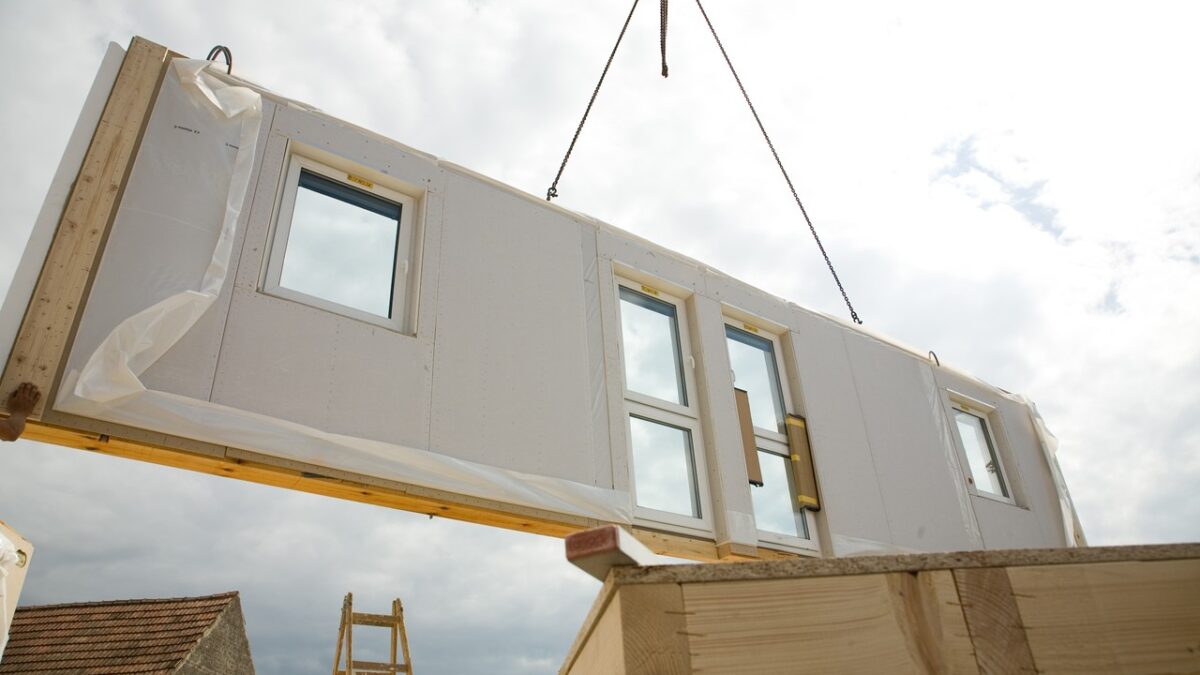Prefabrication has been around for a few decades now. But recently, it’s been experiencing a resurrection in the modern construction and design industry. When properly implemented, prefabrication can save construction companies thousands of dollars in labor and resources.
As the construction industry continues to discover the benefits of prefabrication, technology companies are working quickly to create innovative software that will help civil infrastructure companies keep up. Let’s dive deeper into Prefabrication.
What Is Off-site Prefabrication?
Prefabrication is a method where construction companies move some of their project work to an off-site facility. Usually, these sites have a larger area or are in a location that is protected from environmental factors. The key idea is that the off-site facility creates a better environment for the project or work than the laydown area.
Construction companies benefit from off-site prefabrication because the process reduces the number of contractors and resources they have to coordinate with on the site, which can often be a hassle due to the difficulty to operate inside. When space is limited, mistakes in delivering materials at the wrong time can result in expensive overtime labor costs and unexpected inventory costs. Thus, moving part of the construction off-site can reduce these problems. Projects and teams benefit from off-site prefabrication and are especially useful for complex projects.
Building Information Modeling Technology and Prefabrication

Prefabrication is an amazing cost-saving measure for construction companies, but it’s only as good as the technology used to support it. Building Information Modeling software allows architectural and construction firms to collaborate with general contractors, mining contractors, architects and designers, construction managers, and civil engineering consultants.
Inference Checking and Clash Detection
Clashes are an expensive but unavoidable aspect of construction work. Using software to identify and manage them is an important best practice for prefabrication. Such software identifies potential clashes in the model before they occur on-site, saving them valuable time, money, and labor. Clashes can generally be narrowed down into three categories.
- Hard Clashes
When two objects are directed to share the same space, it is called a hard clash. This usually happens when pipe works or several lines have been routed to pass through a wall or a steel beam and are unexpectedly sharing the same space intended for one or the other. When clashes are not detected in advance, construction companies suffer costly delays in labor and materials. There is construction software that can run clash detections to identify clashes before the team arrives at the job site which helps companies avoid costly mistakes.
- Soft Clashes
This type of clash occurs when two objects are directed to run too close to each other. This could happen when an air conditioning unit has been modeled too close to a solid beam, or a live electrical wire that passes close to a plumbing line or pipe.
Soft clashes usually go undetected during the construction process, but if they are disregarded, they can cause safety problems years down the line. There is construction software that can run interference checks and organize the clashes into meaningful groups. This helps companies avoid expensive liability down the line because of resulting soft clashes.
- Workflow Clashes
When scheduling conflicts, delivery mix-ups, or material delivery issues arise, this is known as a workflow clash. These issues can cause severe schedule mishaps, especially when working on projects with limited space available in the laydown area. Using the right software tools can help notify project teams of these scheduling issues, delivery conflicts, and other schedule problems.
If a construction firm was commissioned to coordinate a complex dining commons project and the project was located in a small space that did not have enough room for the equipment and labor that they needed, so the company decided to have certain portions like the roof and the structural system prefabricated off-site.
Using construction software, the firm can track the progress of the project and coordinate to have it shipped to the job site. The firm avoided expensive workflow clashes, material mix-ups, and time delays, and they were able to complete the project on time as expected on schedule.
Conclusion
Most reputable construction companies are using off-site prefabrication to better manage projects with small laydown areas and in areas where the working environment is not suitable for working conditions. Prefabrication helps reduce the costs, labor force needed, and errors in completing the project.
Prefabricating portions of the project off-site can reduce the company’s environmental footprint and help keep the project on schedule. The benefits of prefabrication are significant, and managing every piece of construction on-site is becoming a more and more unsustainable option for firms who wish to keep up in today’s modern construction landscape.
When choosing the tools and software needed to help manage the progress of the project in the prefabrication process, construction and project managers will benefit from using mobile-friendly software to help improve communication between each and every stakeholder and can easily disseminate information and messages, that also comes with incredible clash detection capabilities.


